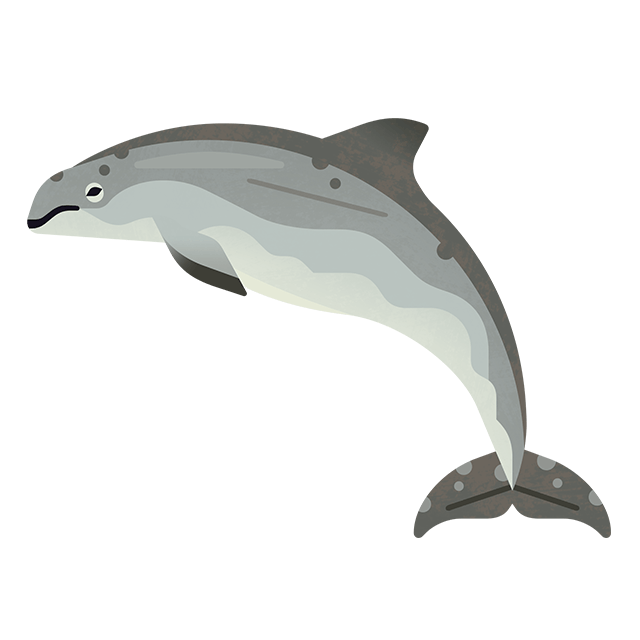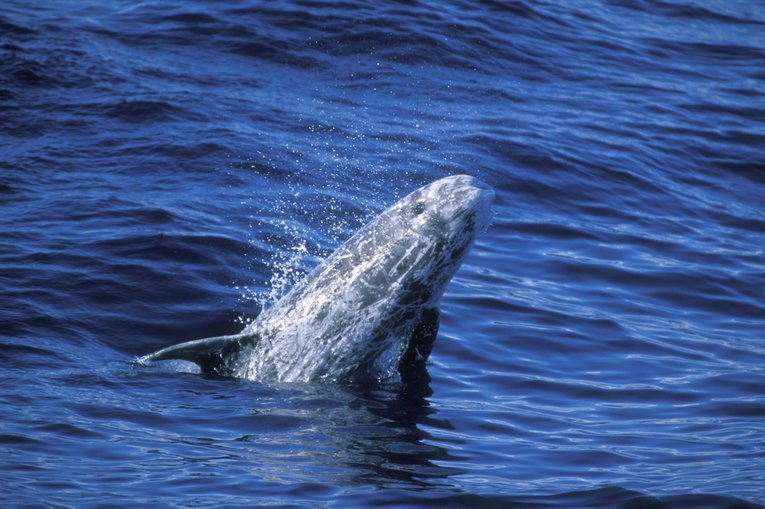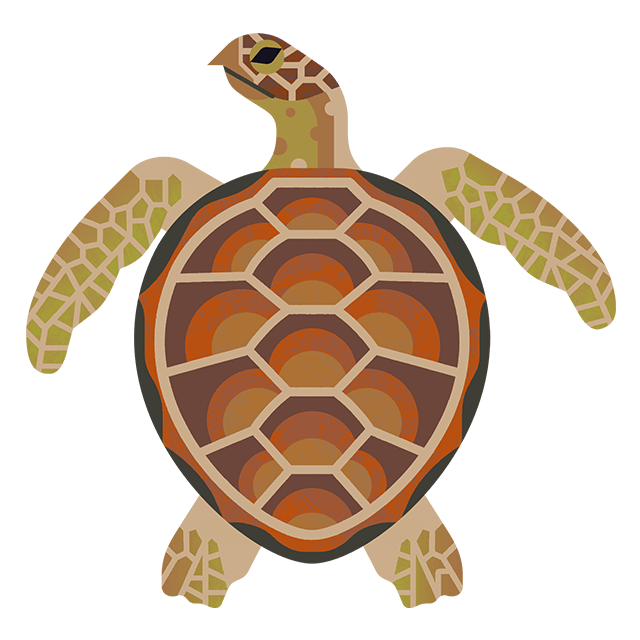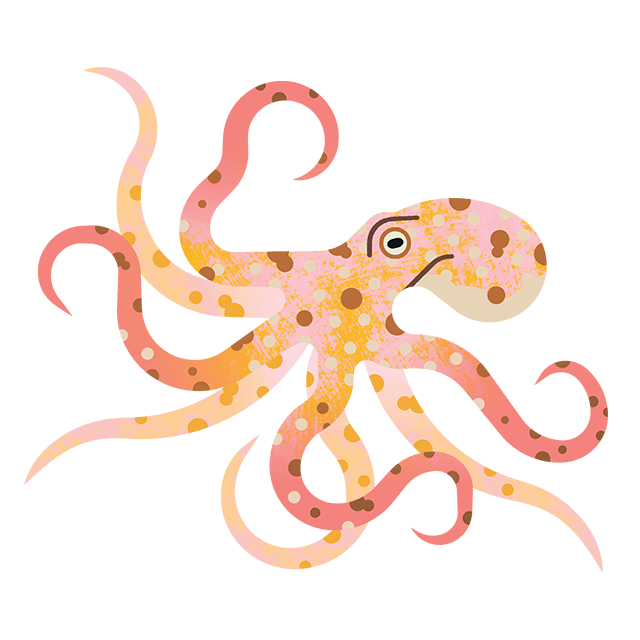Fintastic dolphin facts to make a splash
Dolphins are a favourite among many because of their friendly and playful nature, but how much do you know about these clever cetaceans? Dive into our list of interesting facts to learn more about these majestic marine mammals.
Bottlenose dolphins can recognise their own reflections
Bottlenose dolphins are so clever that they may be able to recognise themselves. One study tested this theory by placing marks on two dolphins’ bodies; both dolphins used a mirror to investigate the marked parts of their bodies, suggesting that they can recognise their own reflection. This makes the bottlenose dolphin one of few non-human species to have passed the mirror recognition test.
Despite being called the killer whale, orcas are actually dolphins
The so-called ‘killer whale’ (orcinus orca) is actually a member of the Delphinidae family and is the largest species of dolphin. Orcas’ diets vary depending on their geographic location and their pod’s hunting habits. They’re known to eat seals, sea lions and the occasional shark - sometimes even whales! In 2022, a pod of orcas was observed hunting down an adult blue whale near Australia, showing how these dolphins gained their nickname.
Dolphins have played central parts in many myths and folklore
Dolphins are depicted in many cultures as a symbol of good luck, with the appearance of the animals around their boat seen as a good omen by sailors and some Celtic tribes seeing the dolphin as the Watcher of the Waters and guardian of all things water related.
In Ancient Greek texts, dolphins are depicted as the messengers of Poseidon who would bring the souls of the dead to a paradise island, and Māori legend speaks of a ‘taniwha’ (shaman) that would take the form of a dolphin to warn the Ngāti Tamaterā of Hauraki tribe of an impending invasion.
However, not all legends presented dolphins as such benevolent creatures – some Amazon tribes believed that the boto, the Amazon river dolphin, could transform into a handsome man at night to seduce women.
Adult Risso’s dolphins are easily identified by their extensive scarring
These scars are usually caused by tooth raking (dolphins lightly scratching each other with their teeth to express authority), from playing, or from hunting squid whose beaks can leave a nasty scratch!
Some dolphins can be found in rivers rather than the ocean
Although most dolphins live in the ocean, some species can be found in freshwater systems such as rivers and lakes. However, these species, such as the Ganges river dolphin and Indus river dolphin, are not considered to be ‘true’ dolphins which are part of the Delphinidae family and are only found in oceanic and marine environments.
As well as being adapted to freshwater, river dolphins differ from oceanic dolphins in several ways: they typically have longer, flexible beaks to help them catch fish, are less streamlined and have smaller dorsal fins. They also tend to live in smaller groups or alone.
The Baiji dolphin is thought to be the first dolphin species to become extinct because of humans
Despite conservation efforts in 2001, the Baiji dolphin (or Chinese river dolphin) was declared extinct in 2007 after an extensive six-week expedition to find one was unsuccessful. The loss of this creature is widely attributed to the human activity that has taken place around the Yangtze river where it lived, including noise pollution, unsustainable by-catch by local fisheries and habitat loss caused by the construction of the Three-Gorges Dam.
However, there may be some hope: there have been some unconfirmed sightings of the Baiji dolphin, although these reports are rare. Currently, the IUCN lists the species as "critically endangered: possibly extinct".
Some dolphins have learnt to work with humans when fishing
In Myanmar, Irrawaddy dolphins have been seen ‘helping’ fishermen by herding fish towards them and signalling when to cast the nets. They then eat any fish that escape the sinking net while the fishermen bring in a larger catch. Bottlenose dolphins have also been recorded participating in similar behaviour in Mauritania and Laguna, where they drive fish to the shallow waters where the fishermen cast their nets. They have also been observed forming these relationships with other animals, including birds.
New sub-species of dolphins are still being discovered
There are currently 42 recognised species of dolphins. However, scientists have slowly been discovering subtle genetic differences between populations that were previously thought to belong to the same species.
In 2014, the Australian humpback dolphin was reclassified as a new species after it was previously thought to be an Indo-Pacific humpback.
Every cetacean evolved from a land-dwelling mammal
You may think that dolphins’ ancestors would have always been ocean-based creatures, evidence suggests that one of their ancient ancestors was a wolf-sized land mammal called Pakicetus, which is recognised by scientists as one of the first cetaceans. It’s believed that some of the species’ relatives, such as Ambulocetus, ventured further into the water and adapted to this new environment. This was a slow process - it was around ten million years until cetaceans had fully adapted to life in the water.
A dolphin’s age can be determined by its teeth
In the same way we can age a tree by counting its ring patterns, scientists can determine a bottlenose dolphin’s age by counting the dentin layers in one of its teeth, with each layer representing a year of growth.
X-rays can be used to examine the internal dentin layers of a dolphin’s tooth without it being extracted from the dolphin’s mouth, preventing the animal from becoming harmed. Scientists can also study a dolphin’s earwax build up to estimate its age but happens less often.
Dolphins in the UK
Did you know that the UK is home to four different species of dolphin? Bottlenose, short-beaked common, Risso's and white-beaked dolphin can all be seen around our coasts. Popular locations for dolphin spotting include Cornwall and Brighton in England, Cardigan Bay in Wales, the Moray Firth in Scotland and the Causeway coast in Northern Ireland. Short-beaked common dolphins and bottlenoses can occasionally be seen around the Channel Islands, too.











